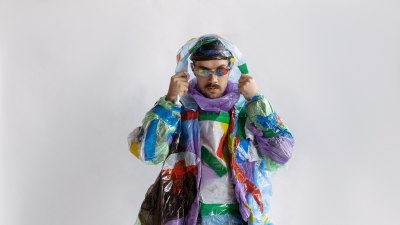Why Every Major Event Has at Least One Person in a Ridiculous Outfit
Discover why peculiar outfits often appear at major events and their impact on culture.

Image by master1305 on Freepik
Throughout history, major events have been characterized by an array of vivid personalities and styles. Regardless of the occasion—whether a prestigious award ceremony, a high-profile sporting event, or a significant political gathering—there's a common denominator that always seems to emerge: at least one individual dressed in an outfit that can only be described as ridiculous. This phenomenon begs the question, why do such outfits appear during these pivotal moments in society? Let's dive deeper into the multifaceted reasons behind this trend.
Firstly, the definition of what constitutes a 'ridiculous outfit' can be subjective and varies greatly depending on cultural context, individual taste, and societal norms. For some, a bright, flamboyant attire might be viewed as a bold statement of creativity and self-expression, while others may see it as a desperate attempt to draw attention. Regardless of perspective, these colorful and exaggerated ensembles certainly generate buzz and discussion, which leads us to the next point—attention-seeking behavior.
The Psychology of Attention-Seeking
Major events are often covered extensively by media and are attended by influential people and celebrities. Being seen at these events elevates one’s social standing, and many individuals feel compelled to make a mark through their attire. Donning an outrageous outfit can be an effective strategy for garnering attention, creating a memorable image, or even becoming a viral sensation on social media platforms. Attention-seeking behavior is an intrinsic part of human nature; people often seek approval, validation, or notoriety based on how they present themselves.
Moreover, the rise of social media has amplified this behavior exponentially. In the era of Instagram, Twitter, TikTok, and other platforms, individuals can showcase their unique fashion choices to a global audience. A striking appearance may not only capture the attention of event attendees but also generate significant online engagement. The more outrageous the outfit, the higher the chances of it being shared, liked, or commented on, thus achieving a form of digital immortality
Fashion as a Form of Expression
Furthermore, for many people, fashion serves as a powerful tool for self-expression. Wearing unconventional clothing can symbolize individuality, rebellion, or a break from traditional norms. At a major event, individuals may use their attire to communicate their personality or values, often embodying a statement that may resonate with a broader theme of the occasion. For example, someone rocking a vintage costume at a film festival may be paying homage to cinema's rich history or expressing their love for a particular genre.
Similarly, certain events may have their own unspoken or established dress codes that invite unique interpretations. The Met Gala, for instance, is famous for its theme-oriented dress code, encouraging attendees to express creativity and push boundaries in fashion. As a result, it often turns out to be a platform for individuals to flaunt outrageous outfits that stray far from conventional fashion norms.
Cultural Commentary and Satire
In some instances, a ridiculous outfit can serve as a form of cultural commentary or satire. Individuals may wear attention-grabbing attire to challenge societal expectations, highlight issues, or provoke thought. For example, political events have witnessed various activists use humor and satire displayed through absurd clothing to make a statement about political situations or social injustices. This approach allows them to convey serious messages while simultaneously entertaining and engaging audiences.
Moreover, the notion of ridicule itself can be part of a larger dialogue about fashion norms and cultural expectations. By wearing something considered 'ridiculous,' individuals invite discussions about what is deemed acceptable or the constraints imposed by society on personal expression. In turn, this reflects a society's evolving view of creativity and participation in cultural conversations.
The Role of Humor and Entertainment
Another important factor is the inherent role of humor and entertainment at major events. People often engage with events not solely for the content but also for the overall experience, which includes enjoyment and laughter. A whimsical outfit can lighten the mood and provide comic relief, leading to memorable moments not just for the individual but for those around them as well. Some may think, “If life is serious, why shouldn’t fashion be fun?”
Humor translates seamlessly into the fashion world, whereby the unexpectedness of a ridiculous outfit can spark laughter and amusement among attendees. Additionally, the storytelling aspect of outrageous clothing creates a memorable dialogue that can continue long after the event concludes.
Social Media and the Viral Effect
The rise of social media has fundamentally altered the landscape of how we perceive and engage with major events. The appetite for visual content drives individuals to seek out unique looks, and those wearing eccentric outfits often become the stars of social media feeds. The ‘viral effect’ can turn a one-off spectacle into an ongoing conversation, driving shares, likes, and comments that further amplify the visibility of the ridiculous outfit.
This phenomenon is often seen with influencers and self-proclaimed trendsetters, who capitalize on the virality of their visuals, prompting others to aspire to the same attention-seeking aesthetic. The social media playground has opened avenues for individuals to redefine their identities, using outrageous outfits as a vehicle for expressing humor, creativity, or subverting mainstream norms.
Subversion of Traditional Norms
Examining the broader sociocultural landscape, it’s evident that as societal norms become more inclusive and diverse, the acceptance of eclectic fashion choices at major events also evolves. What was once considered 'ridiculous' may eventually lead to the formation of new trends and styles. This indicates a collective shift in attitudes toward self-expression and the normativity of attire.
The subversion of traditional expectations can be liberating for many, serving as a catalyst for more vibrant and customized forms of clothing. This reflects a society increasingly preoccupied with individuality and authenticity, where rigid dress codes are often challenged.
Embracing the Ridiculous
In conclusion, the appearance of at least one person in a ridiculous outfit at major events is a reflection of various cultural, psychological, and social dynamics at play. It represents the enduring desire for self-expression, attention, and humor, along with the innate human tendency to push boundaries and challenge conventions. As we move forward in an ever-evolving societal context, it's clear that the intersection of fashion and cultural commentary at major events will continue to intrigue and highlight the complexity of human identity.
Ultimately, embracing the ridiculous may encourage others to explore their own boundaries, sparking creative discussions around fashion, culture, and self-expression. So, the next time you see someone in an outrageous outfit at a major event, take a moment to appreciate the meaning and impact behind it; after all, it’s that very eccentricity that makes life more colorful.











